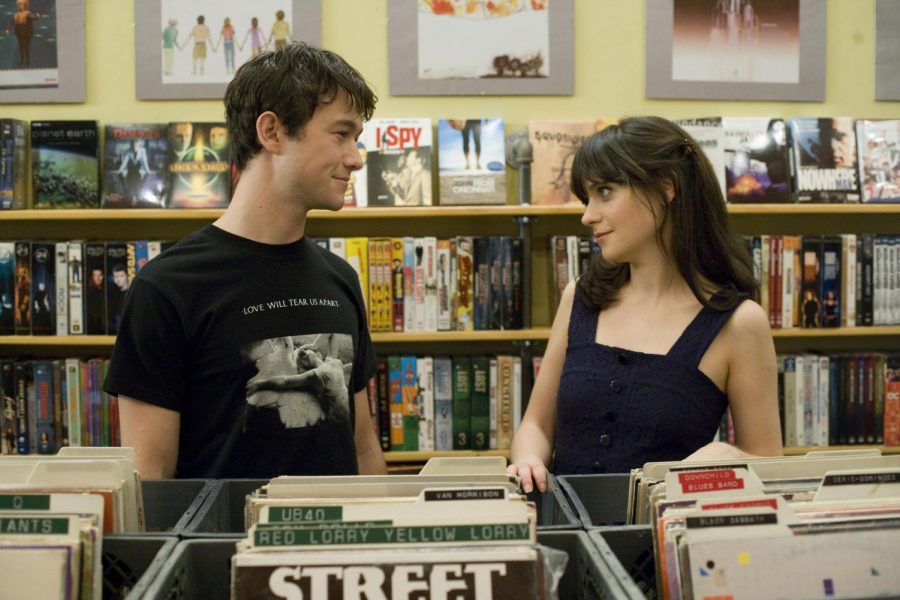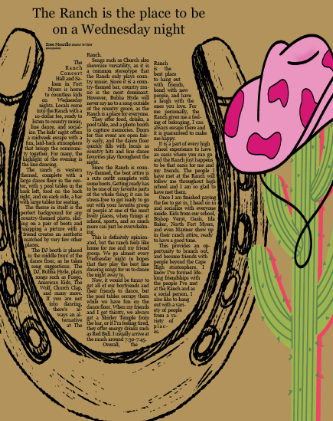(500) Days of Summer is an incredibly real film
“Some people are meant to fall in love with each other, but not meant to be together.”
(500) Days of Summer is different from most romantic comedies, as it portrays a love story where the two protagonists don’t end up together. A story between the two lovers, Tom and Summer, (500) Days of Summer is a modern representation of how love is messy, and sometimes just isn’t enough.
The film starts with Tom Henderson, played by Joseph Gordon-Levitt, who is a greeting card designer with aspirations to become an architect, meeting his boss’ new assistant, Summer, played by Zooey Deschanel.
(500) Days of Summer almost entirely revolves around Tom and Summer’s relationship, and how they become dependent on each other. Tom creates a fantasy around their relationship, making it his entire personality. The film takes you through over a year of Tom and Summer’s lives, and how the two of them evolve throughout their relationship.
Like in most rom-coms, Tom and Summer are young adults, searching for meaning in their lives. However, from the beginning of the movie, it is made clear that this is no ordinary love story. Often in rom-coms, the female love interest is made to be dumb, and without a personality.
This is not the case with Summer. She is well-developed, has interests, and made clear boundaries from the beginning of her relationship with Tom. Summer knows that she doesn’t want anything serious from the start. These clear boundaries set her apart from other female love interests in classic romantic comedies. Not to mention that Tom doesn’t fall into the trap of becoming a personality lacking hunk of muscle. Not to play into the “he’s different” trend, but Tom is. He’s honest, caring, and admits when he’s wrong. The movie doesn’t spend the majority of the film leading up to their ultimate get-together, as Tom and Summer start “dating” fairly early on in the movie.
Instead, the film follows the evolution of their relationship: the ups, the downs, and everything in between.
The relationship between Tom and Summer is quite different from most romantic comedies. Other than the fact that their relationship is explored more than in most romance movies, viewers see other aspects of Tom and Summer’s lives, specifically Tom’s. His relationship with his friends, Paul and McKenzie, played by Matthew Gray Gubler and Geoffrey Arend respectively, and his sister, Rachel, played by Chloe Grace Moretz, all give Tom a very traditionally human-like quality.
As most rom-coms don’t display outside relationships, it was pleasing to see how Tom reacted with his sister, Rachel, and how even though he’s ten years her senior, he still takes everything she says to heart. Tom’s appreciation for his sister is seen from the very beginning, as she’s the person Tom’s friends call when he’s upset with his breakup with Summer.
Similarly, Tom’s relationships with Paul and McKenna are unique to rom-coms. At first glance, Paul and McKenna appear like any other side character; there to support the protagonist. In part, this is true. However, Paul and McKenna are more than just the no-personality sidekicks. They have real lives, full of their own relationship problems, and they portray incredible emotion.
Very often do the two protagonists have a life told outside of their forbidden romance. In (500) Days of Summer, Tom has a life outside of Summer at the start of the film; however, as time progresses, it can be seen that Tom’s life becomes absorbed with Summer. She is his only reason for happiness, a thing that she never wanted to become.
Their relationship is portrayed differently compared to most films of this time. While the movie was released in 2009, the message about this heterosexual relationship still holds true. Summer’s want for “fun” and not for anything serious is much different from how rom-coms of the time portrayed relationships. Often, the female love interest is “lovey-dovey” and wants nothing more than to be in a long, committed relationship.
Summer does not, making it very clear from the start that she doesn’t believe in true love, and wants nothing to do with it. It’s why problems begin to arise in Tom and Summer’s relationship. They want different things out of it.
This very real issue was portrayed excellently in the film. While at times, the perspective seemed one sided, as the viewer primarily only sees Tom’s side of the relationship, (500) Days of Summer showed a fairly common issue that couples face in the real world. This is why Summer and Tom’s relationship is so unique. The viewer gets to watch as life gets messy, and things get in the way of their ultimate happiness. Tom’s love for Summer isn’t enough, as she doesn’t have the same idea of endgame as he does.
Their conflicting ideals of endgame evolve so much as the movie progresses, and once at the end of it, the final shock surrounding Summer is ironic compared to her at the beginning of the film.
The format of this film isn’t entirely different from most of its decade. Keeping trends with the cartoon and back and forth time slots that most movies of the 2010s had, (500) Days of Summer is not original in that aspect. However, (500) Days of Summer doesn’t copy that format exactly.
While aspects remain, such as the time jumps between past and present, the story still runs from start to finish. Viewers can see into Tom’s thoughts surrounding his relationship with Summer, as a narrator, voiced by Richard McGonagle, vocalizes his ideals.
All around, the angle that director Mark Webb decided to take on (500) Days of Summer was intriguing. The enticing first scene of Summer and Tom sitting together and the emphasis on Summer’s wedding rings gives off the impression that they will end up together. Yet when McGonagle begins to narrate, saying, “You should know up front, this is not a love story,” immediately, viewers know that not all is as it seems.
It’s why this film is so addicting. Every time the timeline flips back and forth, something new is explored. Visually, the representation of seasons shows Tom’s growth, and at the end, when the timeline restarts, so does Tom.
Summer represents the person in everyone’s life who pushes you to be yourself. Through Summer, whether for better or for worse, Tom realizes that he hates his life, and his job and wants to be what he’s dreamed of his entire life: an architect. It is only through Summer, and her ultimate breakup, that Tom becomes everything he’s ever wanted to be.
There’s something about the chemistry between Gordon-Levitt and Deschanel that makes this film. While, obviously, (500) Days of Summer is about their relationship, the film wouldn’t have been nearly as enjoyable if they didn’t work together on screen. That “on the edge of your seat” feeling, wouldn’t have been a part of this film, had Gordon-Levitt and Deschanel not done a superb job in their scenes together.
All in all, the film was superb. With the chemistry between Gordon-Levitt and Deschanel being as good as it gets, and the plot displaying something unique and real, (500) Days of Summer is a film that stands apart from the rest.
Your donation will support the student journalists of Cape Coral High School. Your contribution will allow us to purchase equipment and cover our annual website hosting costs.








